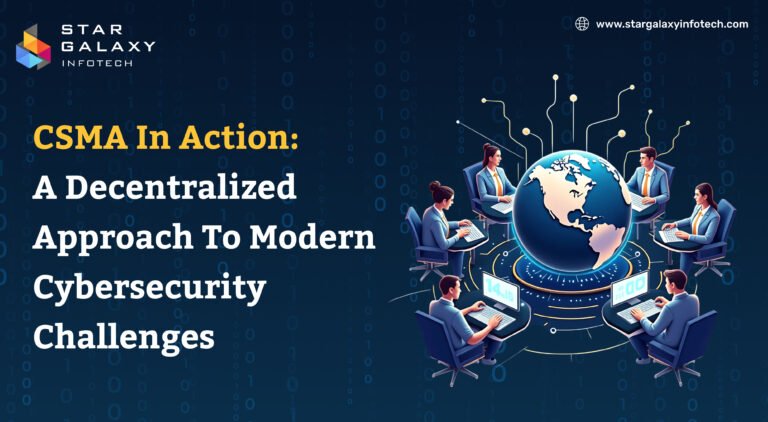What is the difference between DBMS and RDBMS

Data is central to today’s computing systems, and its effective management is imperative for companies and individuals. Two widely used systems for data management are DBMS (Database Management System) and RDBMS (Relational Database Management System). Although both are used to manage data, they are quite different in design, functionality, and application development. Knowing them is essential to make sound decisions when choosing a database solution.
Understanding DBMS
A Database Management System (DBMS) is a program that efficiently stores, retrieves, and manages data. It serves as a liaison between the database and end-user, enabling users to insert, read, update, and delete data. DBMS offers features like data security, backup, recovery, and data integrity.
DBMS accommodates a vast number of data structures and types. For example, it is able to handle hierarchical databases (such as XML databases), network databases, object-oriented databases, or even file systems. Examples of DBMS are Microsoft Access, XML databases, and file systems such as DBM.
Learning RDBMS
A Relational Database Management System (RDBMS) is a customized DBMS grounded in the relational model developed by E. F. Codd in 1970. Data in RDBMS is structured in tables (relations) comprised of rows and columns. One table holds information on one entity type (e.g., customers, products), and each row (record) in the table signifies a distinct occurrence of that entity.
RDBMS maintains data integrity and operates on Structured Query Language (SQL) for data manipulation and querying. Some of the well-known RDBMS packages are MySQL, PostgreSQL, Oracle Database, Microsoft SQL Server, and IBM DB2.
Major Differences Between DBMS and RDBMS
Let us explore the differences between DBMS and RDBMS in a number of different dimensions:
1. Data Structure
DBMS: Employing multiple data models like hierarchical, network, or object-oriented. The structure is normally disorganized or in files.
RDBMS: Has a clearly defined tabular structure with columns and rows. Data is kept in relations (tables) with well-defined relationships.
2. Data Integrity and Normalization
DBMS: Does not strictly enforce data integrity constraints or normalization. Redundant data can be present.
RDBMS: Strictly enforces data integrity constraints like primary keys, foreign keys, unique constraints, and supports normalization to minimize data redundancy and enhance data consistency.
3. Relationships Between Data
DBMS: Inadequate support for relationships between data entities. Any relationships would have to be maintained manually by the user or programmer.
RDBMS: Supports strong support for specifying and maintaining relationships among tables through foreign keys, enforcing referential integrity.
4. Query Language
DBMS: Might or might not utilize a structured query language. Queries are usually limited or proprietary to the DBMS.
RDBMS: Employs SQL heavily to specify, manipulate, and query data.
5. Concurrency Control
DBMS: Provides limited support for concurrent data access that can result in issues in multi-user systems.
RDBMS: Is aimed at supporting concurrent access and transaction management while providing ACID properties (Atomicity, Consistency, Isolation, Durability).
6. Data Security
DBMS: Supports basic security like password protection but tends to lack fine-grained access control.
RDBMS: Supports advanced security features like role-based access control, encryption, and auditing features.
7. Scalability and Complexity
DBMS: Ideal for managing small quantities of data and less complex applications like desktop apps.
RDBMS: Designed to manage large-scale, complex databases that are commonly utilized in enterprise applications.
8. Distributed Database Support
DBMS: Doesn’t normally support distributed databases.
RDBMS: Most current RDBMS systems offer distributed database and cloud support.
9. Examples
DBMS: Microsoft Access, FileMaker, dBASE, FoxPro.
RDBMS: MySQL, PostgreSQL, Microsoft SQL Server, Oracle, IBM DB2.
10. Data Redundancy
DBMS: Higher likelihood of data redundancy due to lack of relationships and normalization.
RDBMS: Reduces redundancy through normalization and relational design.
When to Use DBMS vs. RDBMS
Use DBMS When:
- You’re managing a small amount of data.
- The application doesn’t require complex relationships.
- You’re building a simple standalone application.
- Performance or strict consistency is not critical.
Use RDBMS When:
- You need to manage large-scale data.
- Data relationships and consistency are crucial.
- You require multi-user access, transaction management, and robust security.
- You’re developing enterprise applications or web-based systems.
Advantages and Disadvantages
DBMS Advantages:
- Simple and easy to implement.
- Requires fewer resources and less complex setup.
- Useful for smaller projects or prototyping.
DBMS Disadvantages:
- Poor handling of complex data relationships.
- Limited multi-user support and data security.
- Scalability and performance issues with large datasets.
RDBMS Advantages:
- Strong consistency and integrity of data.
- Scales well with growing data and concurrent users.
- Robust security, backup, and recovery features.
RDBMS Disadvantages:
- More complex to set up and manage.
- Higher system requirements.
- May be too much for small, uncomplicated projects.
Future Trends
The distinction between DBMS and RDBMS has become increasingly fuzzy with the passage of time as new database technologies develop. Contemporary databases tend to integrate NoSQL capabilities, graph databases, and in-memory data processing, fusing traditional DBMS and RDBMS features.
The relational model is still core in most enterprise systems because of its provenance, maturity, and standardization.
Conclusion
Both DBMS and RDBMS perform the fundamental function of data management but offer different requirements and applications. DBMS is best suited for simple, single-user applications where low resource consumption and simplicity are major considerations. RDBMS, on the other hand, provides a secure, scalable, and reliable environment best suited to support complicated, multi-user, enterprise-level applications.
The selection of the right system will be based on the type of your project, the complexity of data, and performance demands. With data driving business innovation more, it is still essential for developers, analysts, and IT professionals to understand the difference between DBMS and RDBMS.





